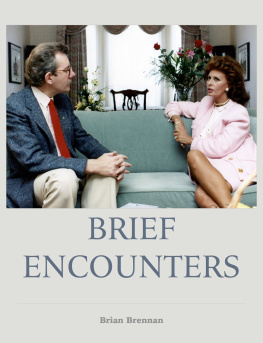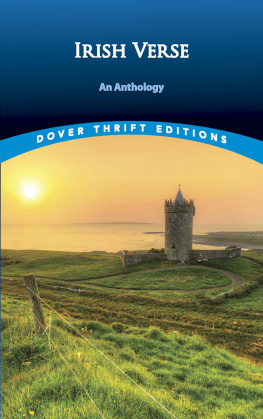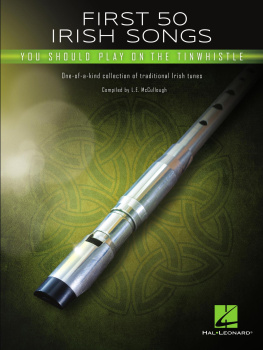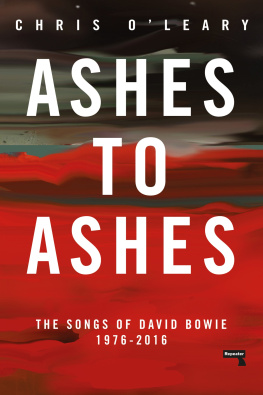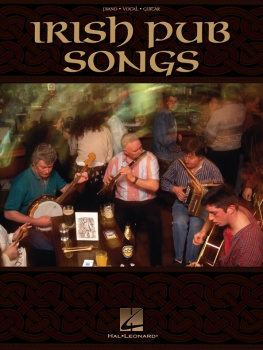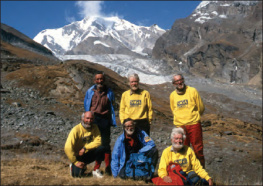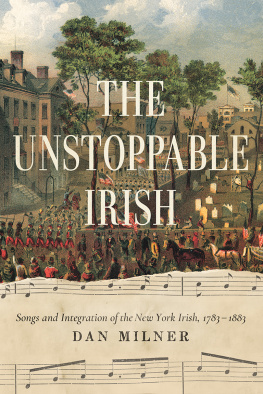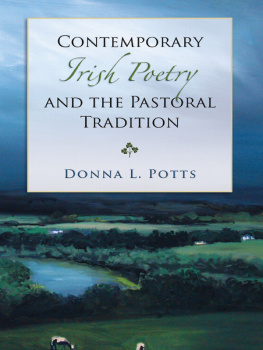Songs of an IrishPoet: The Mary OLeary Story
by
BrianBrennan
SMASHWORDSEDITION
PUBLISHEDBY:
Brian Brennan onSmashwords
First published asMire Bhu N Laoire: A Poet of her People, by The Collins Press,Cork, Ireland, 2000.
ISBN 1-898256-98-5
Songs of an IrishPoet: The Mary OLeary Story
Copyright Brian Brennan 1999, 2007, 2011
All rightsreserved. No part of this publication may be reproduced, stored ina retrieval system, or transmitted, in any form or by any means.Electronic, mechanical, recording or otherwise, without the priorwritten permission of the publisher, except in the case of areviewer, who may quote brief passages in a review to print in amagazine or newspaper, or broadcast on radio or television. In thecase of photocopying or other reprographic copying, users mustobtain a licence from Access Copyright.
SmashwordsEdition License Notes
This ebook islicensed for your personal enjoyment only. This ebook may not bere-sold or given away to other people. If you would like to sharethis book with another person, please purchase an additional copyfor each person you share it with. If youre reading this book anddid not purchase it, or it was not purchased for your use only,then you should return to Smashwords.com and purchase your owncopy. Thank you for respecting the authors work.
About theAuthor
Brian Brennan isan Irish-born author and journalist who immigrated to Canada in1966. He lives and writes in Calgary, Alberta, and specializes inbooks about the colourful personalities and the social history ofWestern Canada. His maternal grandmother, Hannah Twomey (neBurke), was the great-granddaughter of Mary OLeary. For more information, visit his website at brianbrennan.ca
Acknowledgments
This book is basedon several published and anecdotal sources, the principal referencebeing Filocht Mhire Bhuidhe N Laoghaire (literally, The Poetryof Yellow Mary OLeary) by An tAthairDonncha Donnch (Fr. Denis ODonoghue) MA, who served as assistant parish priest inthe West Cork parish of Ballingeary in 1917. His 95-page,red-backed book of Mary OLearys songs was originally published in 1931 by the Irishgovernment printing office but it has been out of print since the1950s. It was felicitously translated for me, in stages, by HughODonnell, Kieran J. Desmond, MichaelDesmond, and Larry McCurry. Having used their translations tocomplete the first part of this manuscript, I was introduced to afurther translation of Filocht Mhire Bhu N Laoghaire whichproved to be a most valuable resource. It was privately publishedin 1996 by two priests, Fr. Richard P. Burke SJ of College of theHoly Cross, Worcester, Massachusetts, and Father Sen Sweeney SMAof Dedham, Massachusetts. They produced it as a non-profit venturefor circulation to about 150 people, and their labour of loveimmensely aided mine. All the mysteries of the little red-backedbook were finally unlocked for me. I wrote to Fr. Burke in July1999, to tell him how much I appreciated his work only to discover,sadly, that he had died two months earlier. I would like to believehe would have given his blessing to this work.
Other textsconsulted include Family Names of County Cork by DiarmuidOMurchadha (Glendale Press 1985, TheCollins Press 1996), and Cork History & Society:Interdisciplinary Essays on the History of an Irish County, editedby Patrick OFlanagan and Cornelius G.Buttimer (Geography Publications, 1993). Additional historicalmaterial was drawn from An Illustrated History of the Irish Peopleby Kenneth Neill (Mayflower Books, 1979). West Cork genealogistMary Casey provided anecdotal material. While others have providedthe raw material for this manuscript, I take full responsibilityfor whatever interpretation or emphasis I may have placed on thefacts supplied.
I would like topay tribute to Helen Davis, the Special Collections Librarian atUniversity College Cork, who was most helpful to me, as wereseveral of her colleagues including Sen Ua Suilleabhin, whotranslated some reference material for me. An additional salutegoes to the gas pump attendant in Inchigeelagh, County Cork, whopointed me in the direction of Mary OLearys gravesite. Othervaluable help in Inchigeelagh came from Sen OSullivan of the Ballingeary Historical Society who hasworked hard to preserve the memory of Mary OLeary. In 1998, members of the Ballingeary Societyjoined forces with the Bantry Historical Society to erect amonument in the Pass of Keimaneigh commemorating the 1822 battlethat is the subject of Mary OLearys best-known poem.
Special personalthanks goes to my daughter, Nicole Brennan, who returned from ayear-long stay in Ireland with a wonderful gift: a rare hardbackcopy of Filocht Mhire Bhu N Laoghaire, the little red-coveredbook that inspired me to write this book. The love and support ofmy wife Zelda sustained me through the tougher parts of theresearch and the writing, when my failing memory of the Irishlanguage, and my struggles to reconcile conflicting historicaldata, conspired to sink this project.
My greatest debtis to the dedicatee of this book, my first cousin and fellow MaryOLeary descendant Kieran Desmond, whoprovided unfailing support and enthusiasm for this labour of love.He assisted me substantially at every stage of the work, and gaveme many useful comments on the finished manuscript.
Brian Brennan, 2011
Authorsnote
In Irish writings,the Gaelic version of the name OLeary isvariously spelt Laoghaire orOLaoire. I have chosen the newer Irishspelling, OLaoire (or N Laoire in itsfeminine form), for the most part, while alternating that with theEnglish version, OLeary, whenever itserves to separate a person of one generation from asimilarly-named member of another generation. The OLeary clan, throughout the centuries, used such alimited range of first names that confusion inevitably arises. Ihave done the same for other Gaelic proper names throughout themanuscript, trying to maintain some consistency in thesimplification and spelling of the names, particularly place names.But there may be some lapses. Maps and authors do not always agree.Neither do writers in Irish, who substitute the letter i for theletter a , or the letter e for the letter a , seeminglyat will.
Note: ThisSmashwords edition, for formatting reasons, does not contain theoriginal Irish versions of the poems, nor the sources, references,tables and explanatory footnotes included in the print version ofthe book. The full print version may be purchased by clicking here .
Introduction
Mire Bhu NLaoire (literally, Yellow Mary OLeary) wasa true local heroine, a popular Munster folk poet of the nineteenthcentury whose creative contribution barely registers a blip on theradar screens of Irish literary scholarship.
While she doesrate a one-paragraph mention in Robert Welchs authoritative The Oxford Companion To IrishLiterature (Clarendon, 1996), she does not appear at all in suchEnglish-language surveys of Irish literature as the magisterial AnDuanaire, (Poetry Anthology) 1600-1900: Poems Of The Dispossessedby Sen Tuama and Thomas Kinsella (DolmenPress, 1981).
One reason forthis may be that Mary OLeary came from anIrish literary tradition that remains virtually inaccessible to allbut the Irish-speaking or Irish-reading minority of the Irishpeople.
Another likelyreason for her obscurity is that Mary OLeary composed her verses to be sung and never wrotethem down. They were passed down orally from generation togeneration. This puts her on the far side of the class divideseparating the less privileged strata of Irish society characterized by oral tradition, the Irish languageand poverty from the side representingliteracy, English, and all the trappings of patriarchal andcolonialist modernity.


